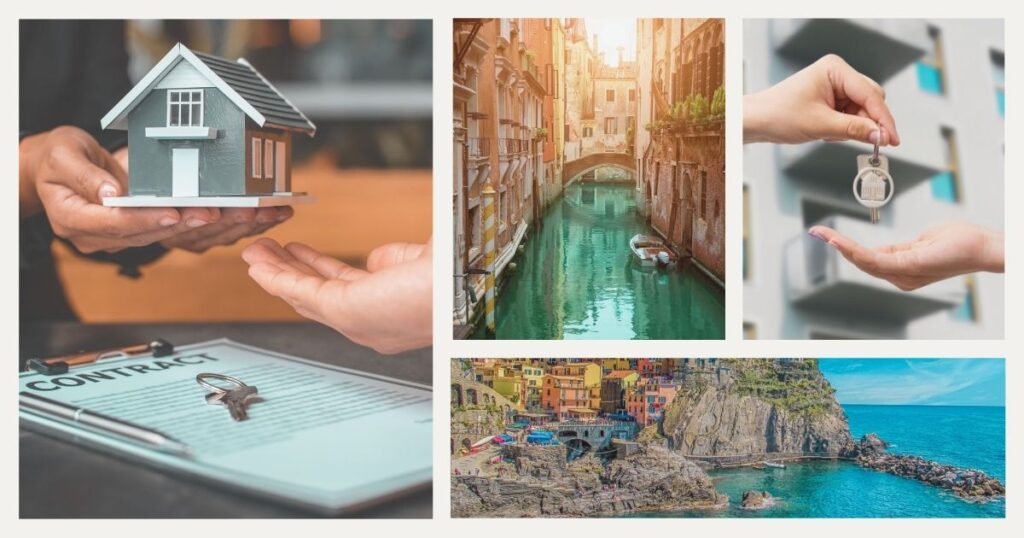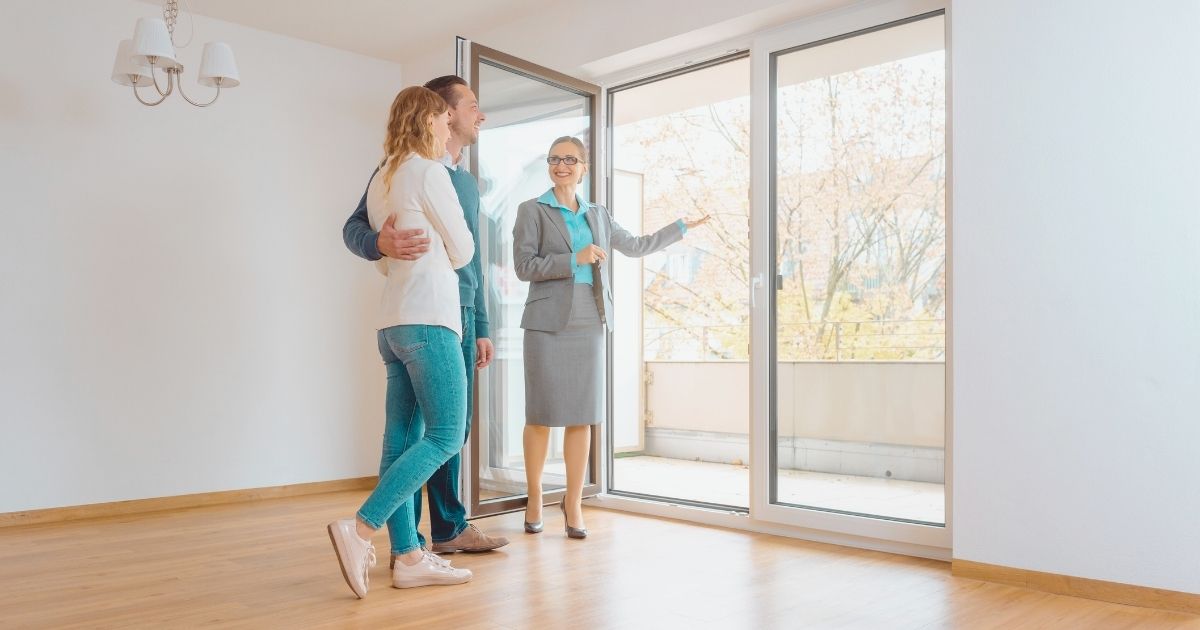Finding your perfect Italian home away from home can be both exciting and challenging. As a digital nomad seeking to rent an apartment in Italy, you’ll discover a country of contrasts—historic charm alongside modern conveniences, bureaucratic complexities alongside warm hospitality.
With stunning landscapes from Alpine mountains to Mediterranean coastlines, Italy offers diverse living experiences for remote workers. Whether you’re drawn to Milan’s cosmopolitan energy, Rome’s ancient history, or Florence’s artistic legacy, understanding how to navigate the Italian rental market is essential.
This comprehensive guide will walk you through everything you need to know about the process to rent an apartment in Italy, from legal requirements to cultural expectations, ensuring your transition to la dolce vita is as smooth as possible.
Understanding the Italian rental market

Before you begin your search to rent an apartment in Italy, it’s crucial to understand how the local market operates and what makes it unique compared to other countries.
Types of rental properties available
The Italian rental market offers diverse options to suit different budgets and preferences. In major cities like Rome, Milan, and Florence, you’ll find everything from modern apartments in high-rises to charming studios in historic buildings. Smaller towns and rural areas offer rustic homes, often with more space but potentially fewer amenities.
Long-term rentals (contratto di affitto) typically run for 3+1 or 4+4 years, with the “+1” or “+4” indicating automatic renewal periods. However, digital nomads can find transitional options through short-term rentals (contratto transitorio) that last 1-18 months or tourist rentals for stays under 30 days.
🌟 Pro tip: when looking to rent an apartment in Italy for 3-6 months, focus on “contratto transitorio” (transitional contract) options, which are specifically designed for temporary residents and often come with more flexible terms than traditional leases.
Seasonal pricing variations
Italy experiences significant seasonal price fluctuations, especially in tourist destinations. If you plan to rent an apartment in Italy during summer months (June-August) or holiday periods like Christmas and Easter, expect substantially higher prices, particularly in coastal areas and major tourist cities.
Winter months (November-March) typically offer the best value in most regions, with potential discounts of 20-40% compared to peak season. Northern Italian cities like Milan and Turin maintain more stable pricing throughout the year due to their business-oriented economies rather than tourism dependence.
Where to search for Italian apartments
Finding the right channels to search for rental properties is crucial when you want to rent an apartment in Italy as a digital nomad.
Online platforms for international renters
Several online platforms cater specifically to international renters looking to rent an apartment in Italy. Websites like Idealista, Immobiliare.it, and Casa.it offer comprehensive listings across the country with English interfaces. For shorter stays or furnished options, platforms like Spotahome and HousingAnywhere specialize in rentals for internationals.
When using these platforms, use filters for “affitto” (rent) rather than “vendita” (sale) and consider selecting “ammobiliato” (furnished) if you prefer not to purchase furniture. Many listings will indicate if the owner is open to short-term or transitional contracts suitable for digital nomads.
Working with local rental agencies
Local rental agencies (agenzie immobiliari) offer valuable on-the-ground expertise when you’re looking to rent an apartment in Italy. They can provide insights into neighborhoods, handle paperwork, and sometimes negotiate better terms with landlords. However, their services come at a cost—typically one month’s rent plus 22% VAT.
These agencies can be particularly helpful in navigating the bureaucratic aspects of Italian rentals and finding properties that might not be listed online. In smaller towns where online listings may be limited, they become even more valuable resources.
🌟 Pro tip: before committing to work with a rental agency, confirm whether their fee is charged to you, the landlord, or split between both parties. This practice varies between agencies and regions in Italy.
Leveraging social networks and expat communities
Facebook groups, expat forums, and digital nomad communities can be goldmines when looking to rent an apartment in Italy. Groups like “Expats in Italy” or city-specific communities often have rental listings posted directly by owners, potentially allowing you to avoid agency fees.
Networking within these communities also provides access to invaluable insider knowledge about neighborhoods, fair pricing, and landlord reputations. Fellow digital nomads can share experiences about internet reliability, coworking options, and nomad-friendly building features that might not be highlighted in standard listings.
Navigating legal requirements and paperwork

The paperwork involved when you rent an apartment in Italy can be daunting, especially as a foreign national. Understanding the process will help you avoid common pitfalls.
Essential documents for renting
To successfully rent an apartment in Italy, you’ll need several important documents. These typically include:
- Valid passport or EU identity card
- Italian tax code (codice fiscale)
- Proof of income or financial stability (bank statements, employment contracts)
- References from previous landlords (if available)
- Visa or residency permit for non-EU citizens
- Proof of address in your home country
The codice fiscale is particularly important and can be obtained from the Italian consulate in your home country or from a local tax office (Agenzia delle Entrate) once in Italy. This unique alphanumeric code will be required for almost all official transactions in Italy.
💡 Did you know? In Italy, all rental contracts must be registered with the Italian Revenue Agency (Agenzia delle Entrate) within 30 days of signing. This registration protects both parties legally and is required for the contract to be fully valid. Ask for the registration number (numero di registrazione) as proof that your contract has been properly registered.
Understanding Italian rental contracts
Italian rental agreements contain several unique features that might differ from what you’re accustomed to. When you rent an apartment in Italy, you may encounter:
- “Contratto 4+4” or “3+1”: Long-term contracts with automatic renewal periods
- “Contratto transitorio”: Temporary contracts lasting 1-18 months
- “Contratto turistico”: Tourist contracts for stays under 30 days
Most contracts will specify details about the security deposit (typically 2-3 months’ rent), payment methods, notice periods for termination (usually 3-6 months for long-term contracts), and responsibility for maintenance and repairs.
For digital nomads, it’s worth noting that Nomada offers resources to help understand these contract types and identify which is most suitable for your situation.
Managing connectivity and digital infrastructure
Reliable internet is non-negotiable for digital nomads looking to rent an apartment in Italy. Unfortunately, internet speeds and reliability vary significantly across the country. Northern regions and major cities typically offer better connectivity than rural southern areas.
When viewing potential apartments, always test the internet speed using services like Speedtest.net. Ask about the type of connection (fiber, DSL, etc.) and whether the building has restrictions on installing new services if needed. Some newer buildings in metropolitan areas offer shared high-speed internet included in condominium fees.
For areas with less reliable fixed internet, having a backup connection is essential. A travel eSIM from Holafly provides flexible data options that ensure you remain connected regardless of your apartment’s fixed internet quality, giving you peace of mind for important video calls and deadlines.
Understanding costs and budgeting for Italian rentals

Creating a realistic budget is essential when you plan to rent an apartment in Italy, as many newcomers underestimate the total costs involved.
Average rental prices across Italian cities
Rental prices vary dramatically across Italy, influenced by location, property size, and amenities. Here’s what you might expect to pay monthly for a one-bedroom apartment in key digital nomad destinations:
- Milan: €900-1,400 in central areas
- Rome: €800-1,200 in popular neighborhoods
- Florence: €700-1,000 in the historic center
- Bologna: €600-900 near the university
- Naples: €500-700 in central districts
- Bari: €450-650 in well-connected areas
Prices drop significantly as you move away from city centers or choose smaller towns. For example, in charming smaller cities like Lucca or Lecce, you might find comparable accommodations for 30-40% less than major urban centers.
🌟 Pro tip: consider basing yourself in smaller Italian cities with good transport connections to major hubs. Places like Padova (30 minutes from Venice), Prato (20 minutes from Florence), or Frascati (30 minutes from Rome) offer significantly lower rental prices while maintaining excellent quality of life and easy access to metropolitan amenities.
Additional costs and hidden expenses
When you rent an apartment in Italy, the monthly rent is just the beginning. Budget for these additional expenses:
- Security deposit (2-3 months’ rent)
- Agency fees (if applicable, typically one month’s rent plus 22% VAT)
- Utilities (typically €100-200 monthly)
- Condominium fees for shared building expenses (€30-150 monthly)
- Internet and mobile services (€25-50 monthly)
- Registration tax for the rental contract (2% of annual rent)
- Furniture (if renting unfurnished)
Utilities in Italy often include separate bills for electricity, gas, water, and waste collection. Some landlords include certain utilities in the rent, while others expect tenants to establish their own utility accounts. Always clarify these arrangements before signing.
Key factors that impact your budget when you rent an apartment in Italy include:
- Location (city center vs. outskirts)
- Property age (historic buildings often have higher maintenance costs)
- Heating system type (central vs. independent)
- Energy efficiency rating
- Presence of an elevator in the building
- Furnished vs. unfurnished
Final thoughts on renting in Italy as a digital nomad
Finding the perfect place to rent an apartment in Italy requires patience, cultural understanding, and attention to detail. The process might seem overwhelming at first, but the reward—living among Italy’s extraordinary beauty, history, and culture—makes the effort worthwhile.
Remember that flexibility is key. Your first apartment might not be perfect, but it provides a foundation from which to explore and potentially find your ideal Italian home. Many digital nomads start with short-term rentals before committing to longer leases once they’ve discovered their preferred neighborhood.
By combining online research with local connections and understanding the legal requirements, you’ll be well-equipped to navigate Italy’s rental market successfully. The journey to rent an apartment in Italy is your first step into authentic Italian living—an experience that goes far beyond tourist attractions to the heart of daily life in this captivating country.
Looking for more guidance on navigating life as a digital nomad in Italy? Explore our comprehensive guide to living in Italy as a remote worker for insights on everything from coworking spaces to cultural integration.
Your Italian adventure awaits with the perfect home base for digital exploration 👉
Frequently asked questions about renting apartments in Italy
While not strictly required, having an Italian bank account makes rent payments easier and may be preferred by landlords for setting up automatic monthly transfers. Many Italian landlords are reluctant to accept international transfers due to fees and complications.
Yes, negotiation is common, especially for longer-term contracts or during off-peak seasons. Offering to pay several months in advance or committing to a longer rental period can help secure a 5-15% discount when you rent an apartment in Italy.
Inspect water pressure, heating/cooling systems, noise levels, natural light, and electrical outlets. Ask about internet speed, utility costs, building rules, and maintenance responsibilities. Also verify the apartment’s energy efficiency certificate (APE) rating.
Work with established agencies, check that the landlord has proper ownership documentation, verify the rental price against market rates, and be wary of requests for large advances before signing a contract or viewing the property in person.
Italian law provides strong tenant protections, including rent control for some contract types, limitations on evictions, and requirements for proper notice periods. Contracts must be registered with authorities to ensure these protections apply.




